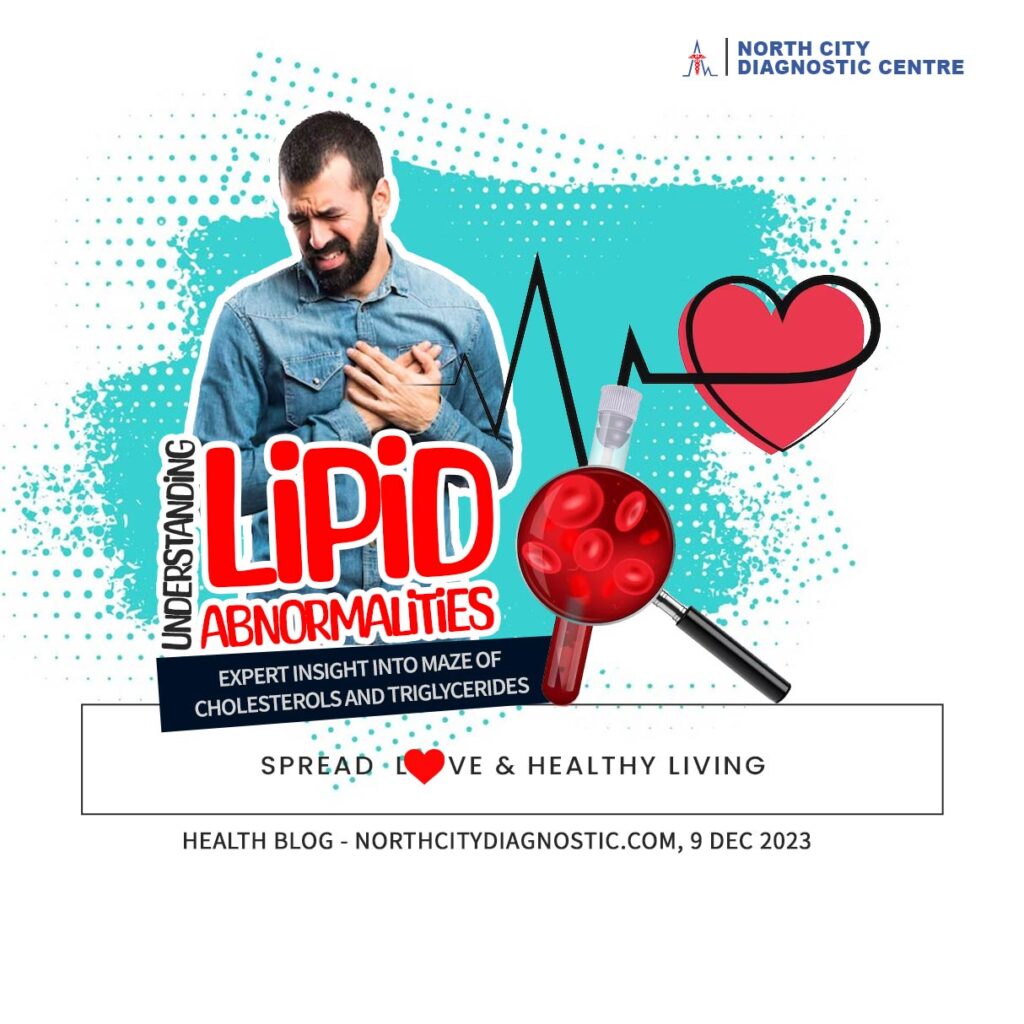
Menu
There is common misconception that heart attacks only happen to old people, or the ones with unhealthy lifestyle, or having obesity issue and other apparent health conditions. However, of late we have witnessed otherwise healthy individuals, active regular gym going people suffering severe heart attacks to the extent of mortality. Siddharth Shukla, Sunil Grover, Remo D’Souza, Puneeth Rajkumar, Raju Srivastava, Suhsmita Sen and more recently Shreyas Talpade, are few surprising names who suffered heart attacks. Some of them sadly could not make it through. They were apparently fit individuals in their 40s.
What went wrong? Well, in many cases the silent killer being the cholesterols and the triglycerides.
It is very important for every individual, even the ones who hit gym every day, to have a clearer understanding of lipid abnormalities. It is good to not be obese, but cardiovascular issues can hit any person, even in their late 30s.
Lipids, encompassing cholesterol and triglycerides, are essential components of our body. But when these lipids go awry, it triggers a cascade of health concerns. Let’s explore how lipids function and why maintaining a delicate balance is crucial.

“High cholesterol does not discriminate against body type, and body weight does not determine if a person suffers from high cholesterol or high triglycerides.”
– Peter Toth, Director, Preventive Cardiology, CGH Medical Center in Sterling, Illinois.
Lipids are molecules that include fats, oils, and other substances. They are a vital part of our body’s composition. Triglycerides store energy, cholesterol builds cell structures, and both play key roles in hormone production and overall bodily functions.
There are four types of Lipids,
In this article we ain’t going to get into no biology classes. Just keep our context to the two important ones – Triglycerides and Cholesterols.
Lipids consist of substances known as low-density lipoproteins (LDLs), often referred to as “bad” cholesterol, and triglycerides, which are fatty acids. High-density lipoproteins (HDLs), on the other hand, are considered “good” cholesterol and can be found in the bloodstream.
In the case of lipid abnormalities or disorders, levels of LDLs, triglycerides, or both are typically elevated. HDLs are called good cholesterol because they assist in removing bad cholesterol from the body.
Accumulation of LDLs and triglycerides can lead to the build-up of fatty materials in the body’s tissues, including the arteries. This can have significant implications for cardiovascular health and increase the risk of conditions like heart disease.
According to Peter Toth, Director, Preventive Cardiology, CGH Medical Center in Sterling, Illinois, “People who appear to be thinner assume they are not at risk. Therefore [they] don’t heed the appropriate steps to take toward a healthier lifestyle, which may lead to higher cholesterol and triglyceride levels, and, ultimately, heart disease.”
Marathon runners, for example, may be harbouring cholesterol and other heart-stopping concerns within their flawlessly toned bodies. Do you know of Jim Fixx, the author of “The Complete Book of Running”? In 1984, he died of a heart attack. Clogged coronary arteries caused that attack (he also had a family history of heart disease, had previously smoked, and had a strenuous job). However, he is not an anomaly: a recent study published in Missouri Medicine discovered that extreme activity, such as marathon running, might increase coronary plaque. So when people talk about “skinny fat,” they mean it! There might be fat veins and veins of fat within the slim body. We don’t think about it since in modern times we continue to glorify slim folks.
Triglycerides, which make up about 95 percent of all dietary fats, are a common type of fat found in both animal and vegetable sources. Once digested, they provide energy for our cells and any excess is stored as body fat to be used between meals.
Consuming more calories than we burn can lead to being overweight or obese, which can result in elevated levels of triglycerides in the blood. Elevated blood triglycerides are associated with an increased risk of heart disease and are also known as hypertriglyceridemia.
Is having high triglycerides bad?
High triglycerides is definitely bad, because they can lead to hardening of the arteries, thickening of artery walls, and increase the risk of stroke, heart attack, and heart disease. Extremely high triglycerides can also cause acute inflammation of the pancreas.
In many cases, habitual overeating causes high triglycerides. Occasionally, the trigger is an underlying condition such as:
Triglycerides and cholesterol are both types of fat in your blood, but they have different functions. Cholesterol is essential for building cells and for certain hormonal production, while triglycerides are responsible for storing unused calories and converting them into energy.
High levels of triglycerides can be present without high cholesterol levels.
This can occur when the diet is rich in carbohydrates and sugars, but not high cholesterol foods. Other factors such as smoking, heavy alcohol use, lack of exercise, and certain health conditions like liver disease and autoimmune disease can also contribute to high triglyceride levels.
High levels of triglycerides can pose a serious health risk, even if your cholesterol levels are normal. Increased triglycerides can cause the walls of your arteries to become hardened and stiff, a condition known as arteriosclerosis. This can significantly increase the chances of developing serious heart conditions such as heart failure, stroke, and heart attack.
A blood test can determine if you have high triglycerides. To ensure accurate results, it may be necessary to undergo multiple blood tests. It is advisable to abstain from eating for at least 12 hours prior to each blood test. This is because food, especially fatty food, can momentarily increase triglyceride levels in the blood and affect the reliability of the test results.
Test your triglyceride level → Book Now
Triglycerides are measured in mmol/L. The range includes:
The doctor may also check your cholesterol levels. It is common for high triglycerides and high cholesterol to occur together. This condition is sometimes referred to as combined hyperlipidemia.
Cholesterol is a waxy substance that is not inherently “bad.” It is necessary for building cells and producing vitamins and hormones. However, excessive cholesterol can be problematic.
There are two sources of cholesterol. Your liver produces the required amount, while the remaining cholesterol comes from animal-based foods such as meat, poultry, and dairy products.
These foods also contain high levels of saturated and trans fats, which cause the liver to produce more cholesterol than necessary. This excessive production can lead to unhealthy cholesterol levels in some individuals.
Certain tropical oils, like palm oil, palm kernel oil, and coconut oil, contain saturated fats that can raise bad cholesterol levels. These oils are commonly found in baked goods.
Unhealthy lifestyle habits, lack of physical activity, smoking, drinking too much alcohol, stress, family history, certain medical conditions, and certain medications can raise your risk of high blood cholesterol.
Race or ethnicity and age can also affect your risk. Indian, Filipino, Japanese, Vietnamese, and non-Hispanic white people are more likely to have high levels of “bad” LDL cholesterol than other groups.
Between ages 20 and 39, men have a greater risk for high total cholesterol than women. Women’s risk increases after menopause.
A blood test can determine if you have an issue with cholesterol levels.
In addition to above you should,
The Lipid Profile test is a vital tool that helps assess the risk of cardiovascular diseases by providing information about cholesterols and triglycerides in the blood. Here are some key reasons for Lipid Profile test:
Regular Lipid Profile testing is especially important for individuals with risk factors such as a family history of cardiovascular diseases, obesity, diabetes, or high blood pressure.
Components of Lipid Profile Test
The components typically included in a Lipid Profile test are:
In some cases, your doctors may require ro calculate additional ratios and indices based on the measured components. Common calculations include:
It’s important to note that reference ranges for these components may vary slightly depending on the laboratory and the units used (mg/dL or mmol/L). Additionally, healthcare providers consider overall cardiovascular risk factors when interpreting Lipid Profile results.
You can get your Lipid Profile Test done at North City Diagnostic Centre. Home collection available. To know more please call 
At North City Diagnostic Center we offer personalized testing schedule that aligns with your medical history and risk factors. Consistent monitoring can be invaluable for early detection and effective management of arthritis. It’s not just about how often you test but making sure that the tests are aligned with your overall health profile for maximum benefit.
#LipidHealthExplained #LipidProfiles #UnderstandingLipidAbnormalities #LipidAbnormalities #CholesterolInsights #TriglycerideManagement #HealthandWellness #HealthJourney #HealthFirst #NorthCity #HealthBlog #NDC #NorthCityDiagnostic #DiagnosticServices #HealthKnowledge
35-A ,Canal West Road
Near Gouri Bari Bus Stop
Kolkata – 700004.
Local: +91 33 6605 0888